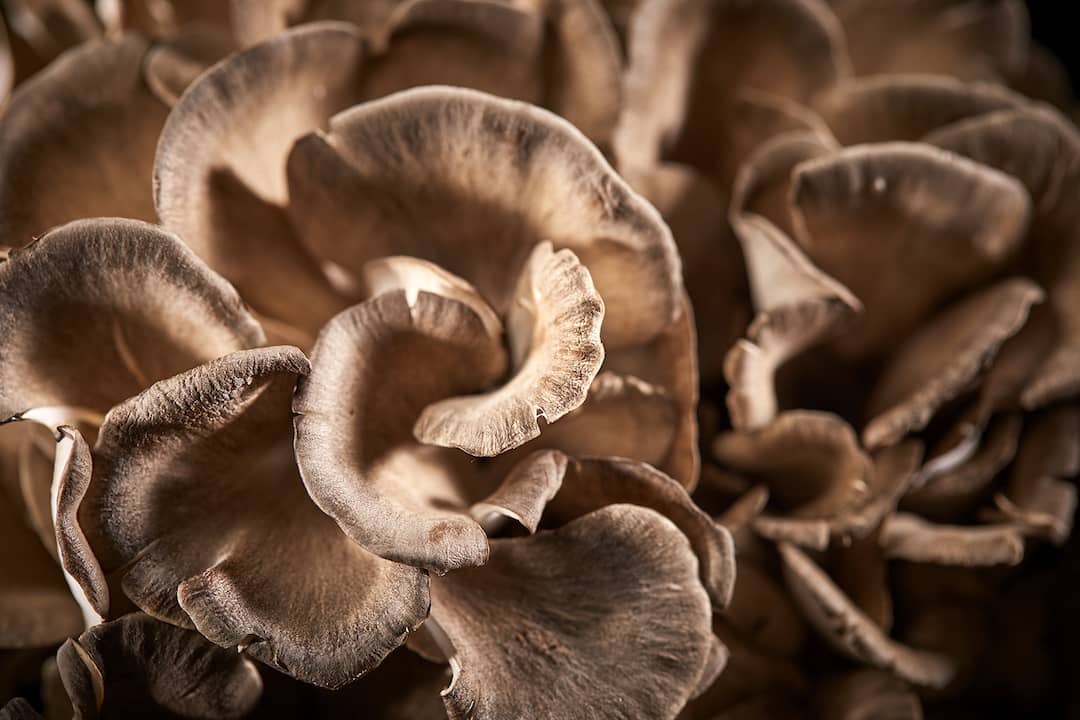
Mushrooms are a common sight in supermarkets and on the menus of local restaurants, but not all mushrooms are created equal. When they’re fresh, flavorful gourmet mushrooms, domestically grown for the culinary industry using sustainable practices, they can elevate a dish to create a taste sensation that’s incomparable. Gourmet Mushrooms, Inc., of Sebastopol has been at the forefront of cultivating premium forest mushrooms for 45 years, starting with shiitakes when no other American grower was offering them. Since then, the company has introduced several new varieties, giving chefs and home cooks the opportunity to experience a range of unusual mushrooms that it describes as “no longer wild, but far from tamed.” In that spirit, it grows more varieties of culinary and nutraceutical mushrooms than any other farm in the country, and it continues to innovate and explore new ground.
A growing business
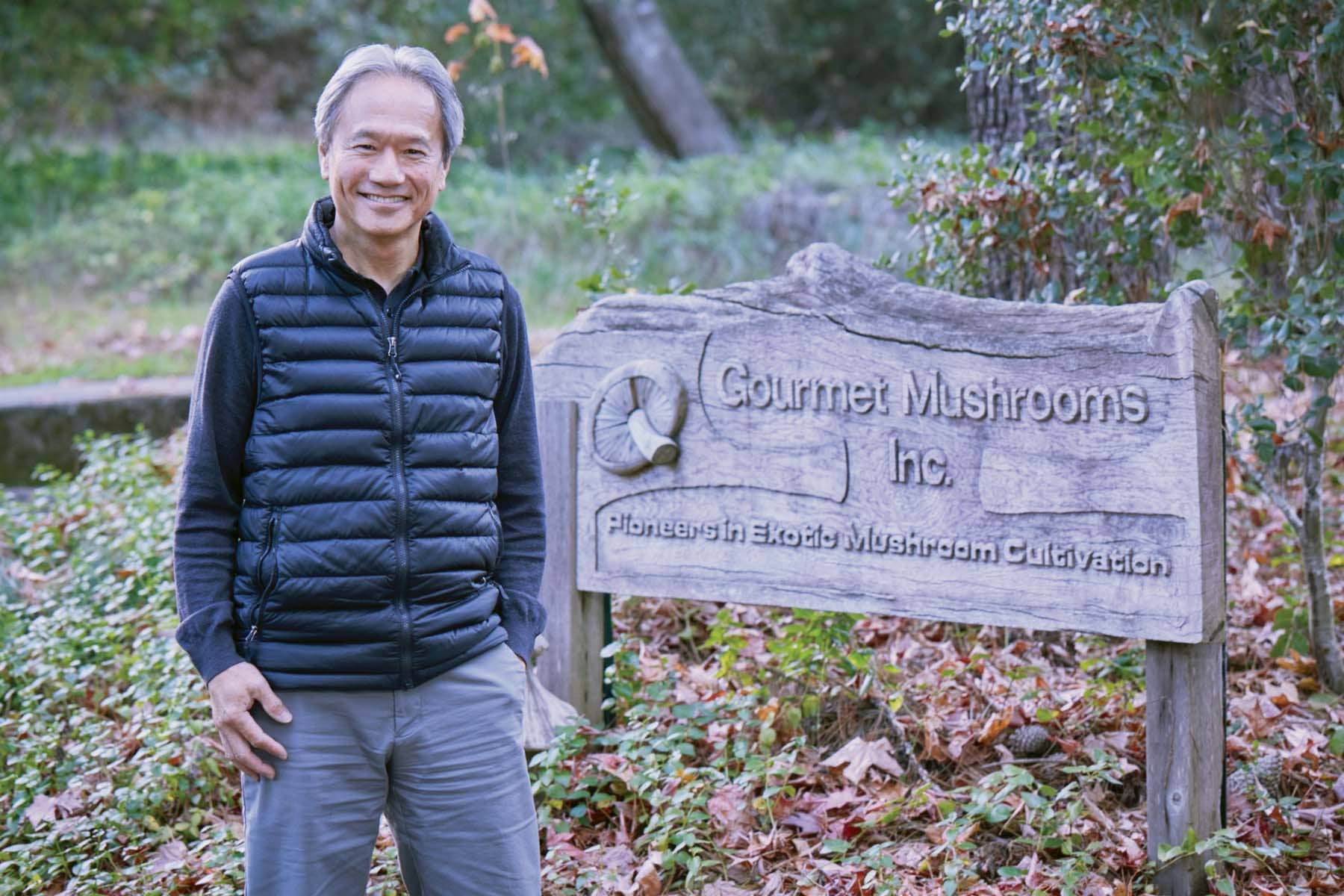
In the beginning, they didn’t make enough money to support both partners, and Law worked at another job in San Francisco. It took until 1990 for the mushroom farm to generate enough income for him to start working full time in the business, but once it was established, it grew and prospered. In 2000, Law and Clark had the opportunity to buy a much larger property, also in the Sebastopol area, and expand. Law, who has a commercial real-estate degree, successfully conducted negotiations to acquire the property, but it was too big for Gourmet Mushrooms Inc. alone, so they sold half of the land to Merry Edwards Winery. They completed construction of a new 43,000-square-foot facility on the remaining half in 2001 and began harvesting and shipping mushrooms from the new site the same year.
In 2007, Clark retired. The same year, he also learned about a farm in Scottville, Mich., that offered a new opportunity. “It’s a wonderful big farm,” he says, adding that it’s 75 acres—five times larger than the property in Sebastopol. He and the owners discussed forming a strategic alliance, and they agreed to chip in the Michigan farm, while Law chipped in the Sonoma facility. Then, in 2008, the country fell into a recession. “By that time, we couldn’t find the money,” he says. They put their plans on hold, but continued collaborating and eventually met for a chat in 2014 in San Francisco. “They said they were throwing in the towel and giving in,” says Law, and they asked him to buy their company. “They named me a price I couldn’t refuse,” he recalls, and he talked to his banker and closed the deal in 2015. “Now we’re growing mushrooms in both locations,” he reports, and fresh mushrooms are the company’s largest source of revenue. When Clark officially retired in 2008, the company had about 60 employees. Law has been running the company as sole owner for the 14 years since, and now it has 150 employees in Michigan and 85 in Sebastopol. Today, the company is harvesting 60,000 lbs. of mushrooms a week.
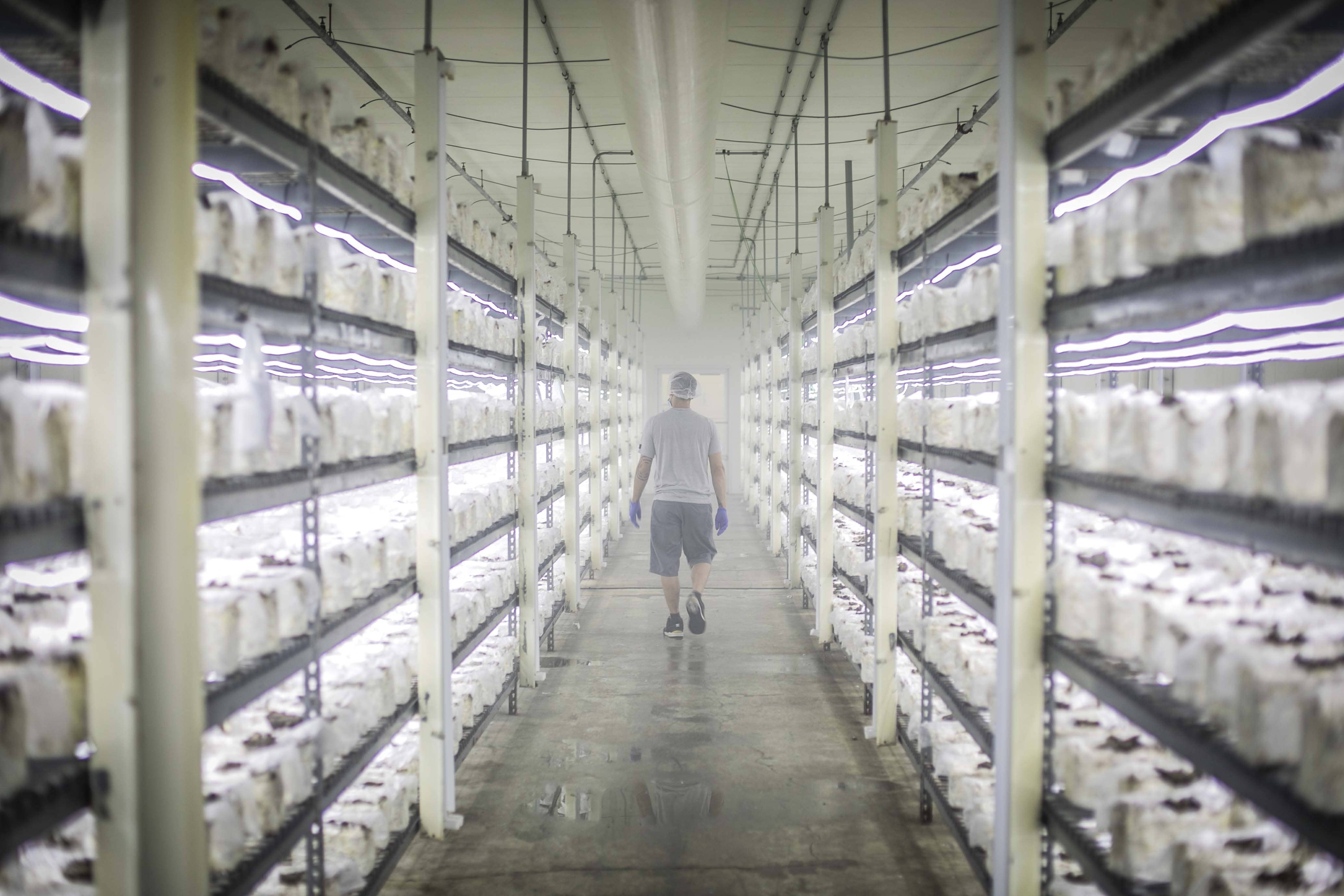
In the case of maitake frondosa—also known as hen of the woods—the idea came from one of the company’s best customers, who was on the east coast. He was buying the variety from an importer, but wanted to work with a domestic source and asked if Gourmet Mushrooms, Inc., could grow it. They agreed to try and learned how to do it from a grower in Japan. The customer wanted 900 pounds a week, so they bought the equipment and started cultivating them on a large scale in 2010. “Today, we’re growing 20,000 pounds a week,” says Law. “Maitake is rapidly becoming our best-selling mushroom, in large part due to its exceptional flavor and health benefits.” More is yet to come, as the company works to develop strains of sparassis, or cauliflower mushroom, and cultivated morels, which have a nutty, earthy flavor and so far are available only in the wild.
From jar to plate
The life cycle of a mushroom plant is four to 15 weeks, depending on the variety, and the process begins with a substrate—the underlying layer on which an organism lives and grows. (In most traditional gardens, the substrate is soil.) The raw material is organic. “Most of our ingredients are from agricultural byproducts,” says Law, explaining that the growing media they use include sawdust from mills, which is a natural product, corncobs and soya bean hulls. He adds that the process is different to that of the button mushroom industry, which uses straw and manure, because the substrate is sterilized rather than pasteurized. Once the substrate has been prepared, it’s heated to 250˚F and held at that temperature for 10 minutes. Next, the material is packed into either reusable jars or plastic bags, depending on the mushroom, and inoculated with mushroom spawn. The jars and bags are then placed on racks in growing rooms that are controlled for temperature, humidity and light, and the mushrooms start to grow.
“Once we start the process, it’s continuous,” says Law, explaining that harvesting takes place on a weekly schedule. “We harvest mushrooms 365 days a year,” he says. “The trick is our environmentally controlled growing rooms. You can rely on fresh-picked harvest year-round.” For the company’s first 15 years, they worked directly with chefs, including celebrity chefs Thomas Keller, Michael Mina and Wolfgang Puck. However, as the business grew, it became more difficult to work with small orders, which could be as little as 20 lbs. Now the company packages, labels and dates the mushrooms in Sebastopol and Scottville, Michigan and sends them to distributors, who resell them to restaurants and directly to markets, such as Oliver’s, Sprouts and Whole Foods.
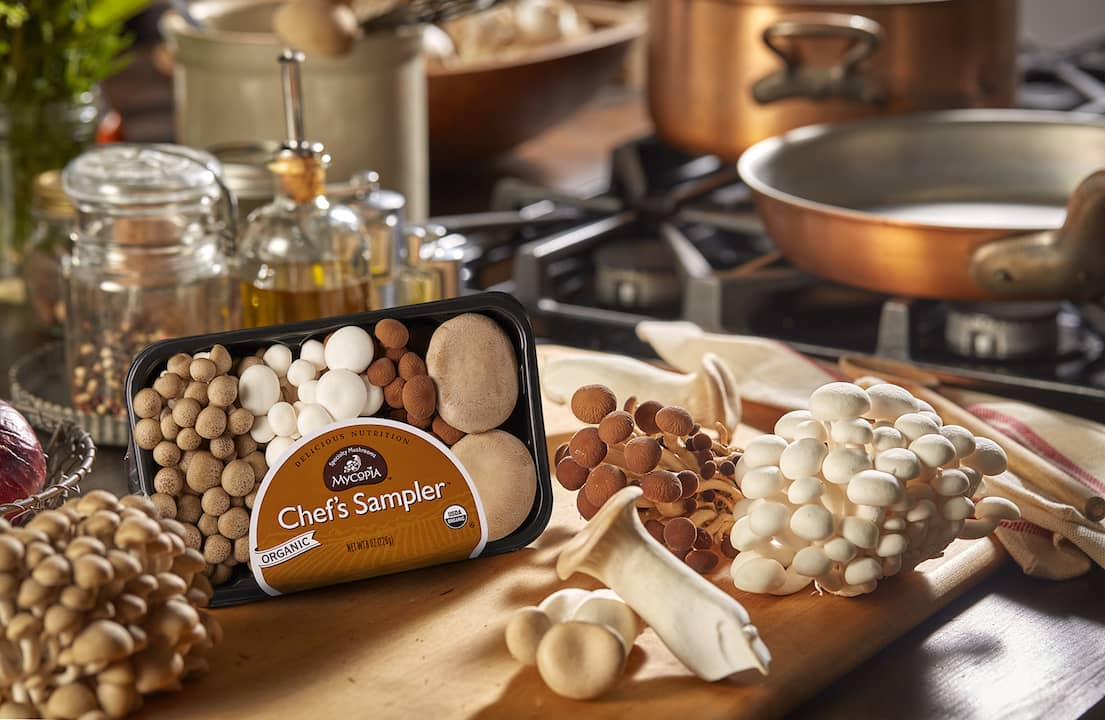
The mushrooms are ready for use when they reach the consumer, other than trimming the bottom of the stem. They’re packaged in clusters, which keeps them fresher, and it’s best not to rinse them with water before using, because the texture will change. Cooking to get the best results is an art. When it comes to cooking, there is an art to the process. “My process for every mushroom is sautéing the mushrooms in a high-temperature pan or wok,” says Law. He puts them in one or two layers and starts without oil. He explains that since mushrooms are 90% water, it is a good idea to express some of the excess moisture. “To tease out the umami taste, you blacken the mushrooms in a dry sauté,” he explains. He cooks them for three minutes on each side and then adds some salt, pepper, garlic and a generous splash of oil at the end and tosses the mixture. “You see the oil catching fire,” he says. If he’s cooking western food, he adds a little butter, and if it’s Asian food, he sprinkles on some soy sauce. “That’s my plate of mushrooms,” he says. He encourages people to be creative, especially with soups and pasta, and recommends using mushrooms in place of meat in vegetarian dishes.
Body and mind
Mushrooms are rich in health benefits. Among them, they are a low-calorie source of essential vitamins, minerals and antioxidants, and they play a role in lowering blood pressure, as well as helping to prevent degenerative diseases. Their anti-inflammatory effect boosts the immune system and they can aid in weight loss when combined with exercise and lifestyle changes, such as reducing the consumption of meat. Eating culinary mushrooms is one way to get the benefits, but mushroom-based nutraceuticals—products from food or components of food that are created specifically to deliver a plant’s health benefits—are another option.
Gourmet Mushrooms Nutraceuticals has grown a line of mycelial biomass products for the health-food industry since the company’s beginning. “When we learned to make shiitakes, we learned to make mycelial biomass,” says Law. Mushrooms are fungi, and the part we eat grows above the growing medium, while a root system called the mycelium develops below the surface. Law explains that apples have seeds that grow into trees when they take root, and mushrooms have spores, which create mycelium. Mycelium grows in the substrate, and he describes it as a mesh of filaments that is the equivalent of a tree. “It’s like a diffused tree trunk,” he says. Once the mycelium has finished building its network, it usually goes on to produce mushrooms, just as an apple tree produces apples, but controlled growing can intercept the process and allow creating mycelium as a distinct product. “When we grow the mycelium on brown rice, we have biomass,” he says. The biomass is made into a powder for health-food companies to use in their products. Law points out that penicillin is based on fungi, and yeast is a member of the fungus kingdom that is used to make bread and wine. Fungi have many uses. “Mushrooms can help us cope with a lot of ailments,” he says, reporting that the company recently developed a new product for nutraceutical use.
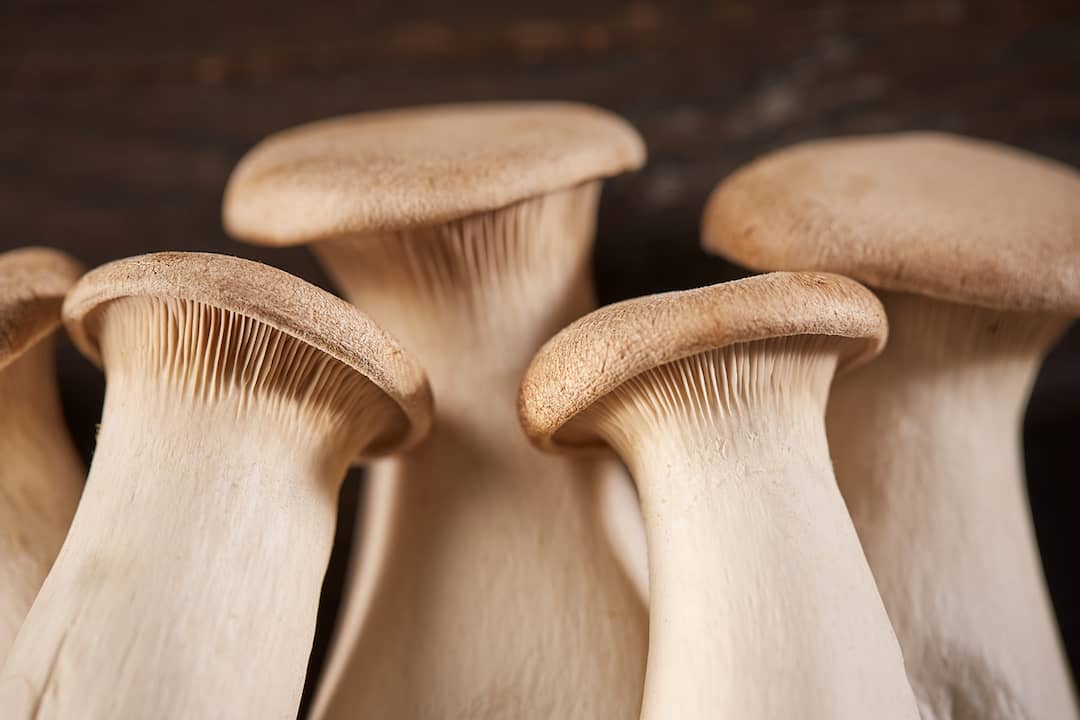
Young people are innovative, says Law, who met two young men from the East Bay who had the idea for creating a mushroom-growing kit for consumers interested in growing mushrooms at home. They received funding to create the kits, but they discovered that while they were good at marketing, production wasn’t their strong point. They asked him to do the kits, and space was available at the Michigan facility, so he decided to take it on.
Law finds mushrooms and mycelium exciting parts of the fungal kingdom that have yet to reveal their full potential. As bioproducts, which come from renewable biological sources, they’re used in textiles, packaging and skin-care products, and they’re also utilized in medicine. In addition, he reports that some companies are working on a mycelium-based Styrofoam substitute. “We are working with a few companies to move them in that direction,” he says. They are involved with another company that makes vegan leather as well. In another development, Mycelium bacon could also reach markets soon, as New York startup Atlast Food Co. readies a bacon substitute made from the fibrous roots of mushrooms for the marketplace. Where mushrooms and mycelium will go next is unknown, but with fertile imaginations at work, the possibilities seem endless. Meanwhile, mushrooms continue to bring Law a great deal of satisfaction. “I’m having a lot of fun,” he says. “They keep us very busy and happy.”
Pulled Maitake BBQ Sliders
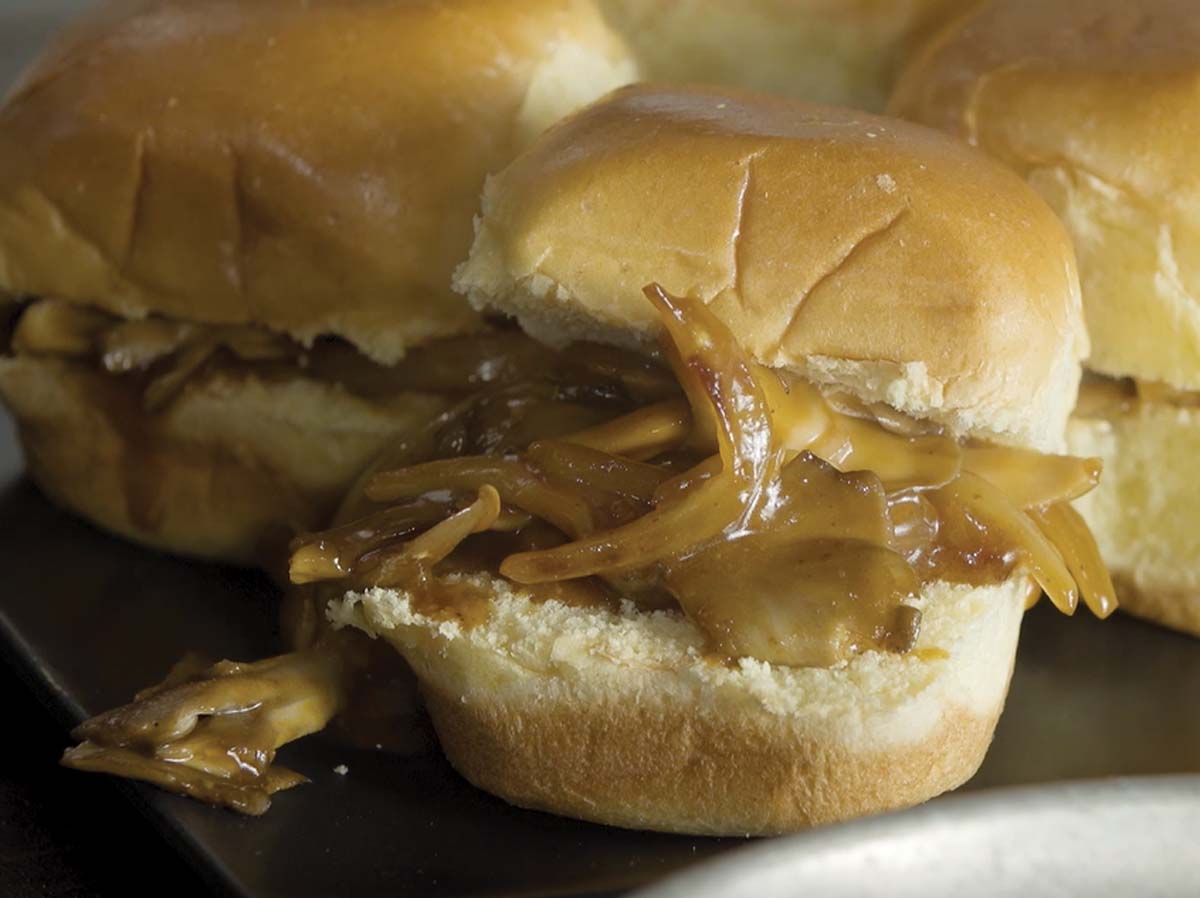
Serves 4
Ingredients
4 oz. Mycopia Maitake Frondosa mushrooms
1/2 cup sweet onion, sliced thinly
1 tbsp. vegetable oil
1/2 cup barbecue sauce of your choice
1/4 cup water
1 tbsp. apple cider vinegar
1 tsp. Dijon mustard
4 “slider buns” — mini burger buns
Directions
- Pull Maitake apart into individual fronds and slice onions.
- Sauté the onions and Maitake in the vegetable oil until lightly browned.
- Once the mushrooms and onions are cooked, add the remaining ingredients: barbecue sauce, water, cider vinegar and mustard. Simmer a few minutes to combine the flavors. Spoon mixture on to slider buns and serve.
Recipe courtesy of Mycopia Mushrooms. For more recipes, visit mycopia.com/recipes.
Mushroom Varieties
The Mycopia brand offers seven varieties of trademarked premium mushrooms.
Alba Clamshell: Quarter-size caps with 2 to 3-inch stems, mild shellfish flavor
Brown Clamshell: Quarter-size caps with 2 to 3-inch stems, mild shellfish flavor
Forest Nameko: Bright orange, earthy forest flavor
Maitake (Hen of the Woods): Large delicate clusters, forest flavor, light crunchy texture
Nebrodini Bianco: Sweet and rich in flavor, 3 to 4 inches tall in the shape of a vase
Trumpet Royale: Savory flavor, a firm, meaty texture, noted for its versatility
Velvet Pioppini: chocolate-brown caps on long cream-colored stems with an intense forest flavor
Learn more about Mycopia Mushrooms and get tips for handling at mycopia.com/fresh-mushrooms.



